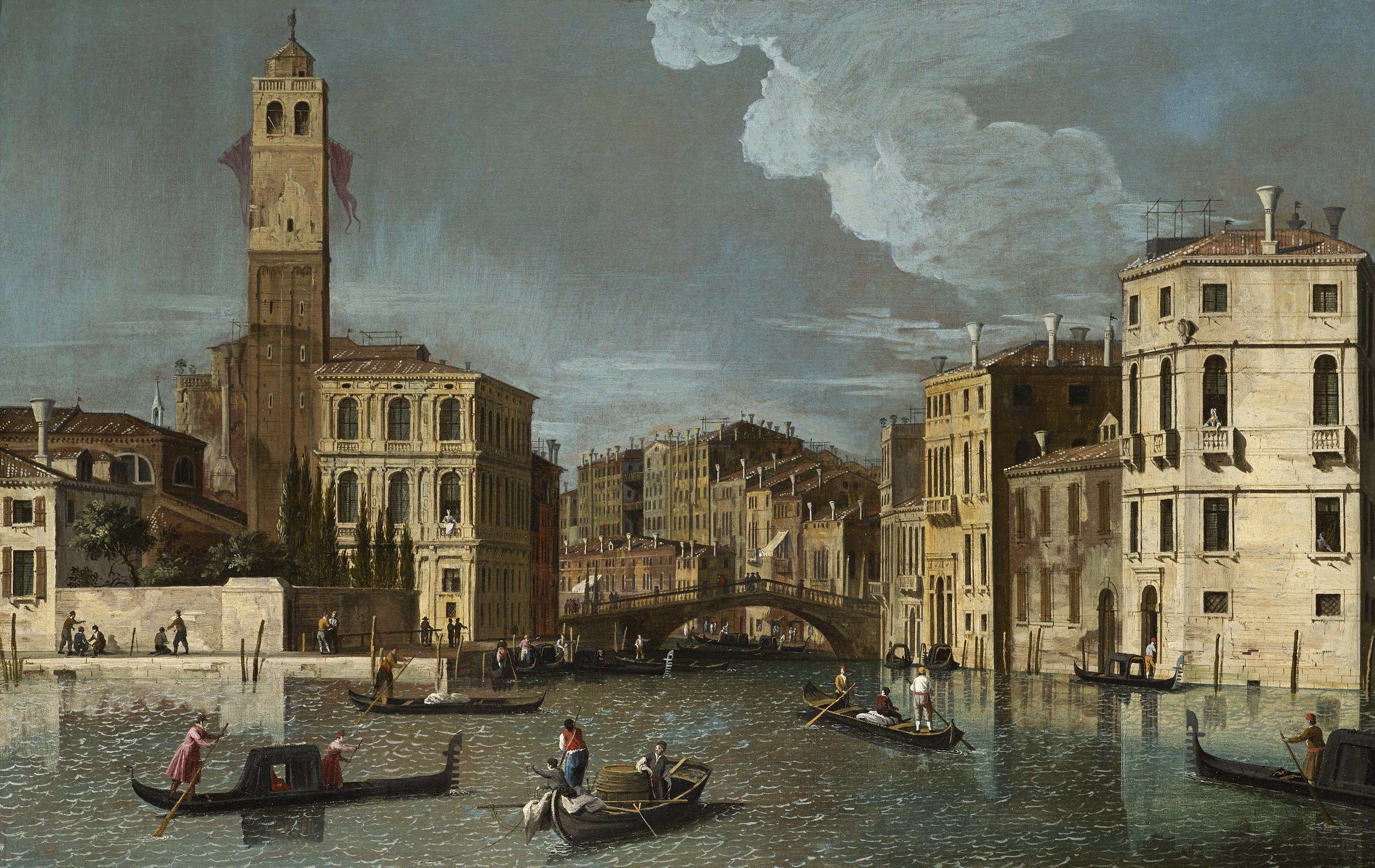BERNARDO CANAL
Venice: The Grand Canal at the Entrance to the Cannaregio with the Church of San Geremia and the Palazzo Labia
(Venice 1664 – 1744)
Oil on canvas - 28 ⅜ x 43 ⅞ inches (72 x 111.5 cm)
PROVENANCE -
With W.L. Lesser, by whom offered at Christie’s, London, 14 May 1904, lot 52, as ‘A. Canaletto’.
Private Collection, Italy.
Best known as the father of Canaletto, Bernardo Canal is an artist of considerable interest in his own right. It should be remembered that, as far as we know, he provided his son with all of the training which he received. Canaletto’s earliest style is, indeed, so close to that of his father that there is some disagreement among specialists about the dividing line between the two. Most of Bernardo’s paintings correspond in composition with works by his son, and it is generally presumed, in most cases probably correctly, that it was Canaletto who invented them. Bernardo’s distinctive style and palette, dominated by browns, remains, however, very much his own. Canal was one of the most senior of the Venetian view painters, only a decade younger than Luca Carlevarijs (Udine 1663 - 1730 Venice), and his style remains thoroughly that of an artist of that generation, stylistically most closely related to that of his near-contemporary Johann Richter (Stockholm 1665 - 1745 Venice). Bernardo clearly earned the respect of his colleagues, serving as Prior of the Venetian Collegio dei Pittori in 1739.
The composition derives from Canaletto’s painting then in the collection of Joseph Smith in his palazzo on the Grand Canal, and now in the Royal Collection (W.G. Constable, Canaletto: Giovanni Antonio Canal 1697-1768, London, 1963 [and subsequent editions revised by J.G. Links], I, pl. 51; II, no. 251). Bernardo, however, almost certainly used the engraving after it by Antonio Visentini, plate X in the first edition of his Prospectus Magni Canalis Venetiarum, published in 1735.
Bernardo has introduced variations, and it is possible that this is the painting recorded by Constable, op. cit., as no. 251(d)5, as in the collection of W.G. Skipwith, Winchester ‘28 ½ x 43 ½ in. (72.5 x 111 cm.). Sky, centre foreground figures, and placing of craft differ slightly from the Windsor picture, otherwise a near replica’)


